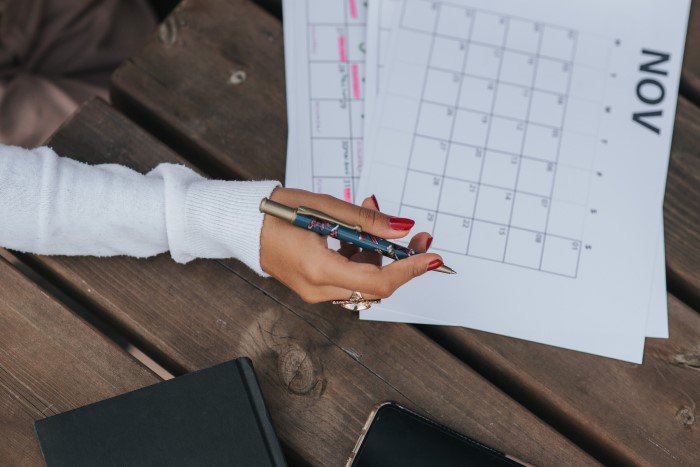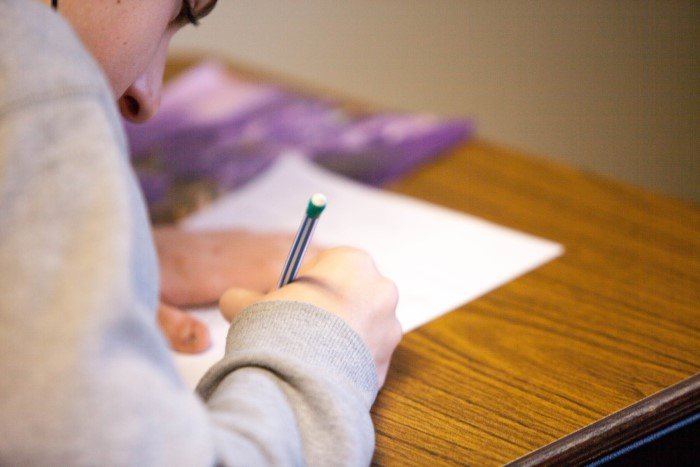Spaced Repetition: the Busy Student's Best Friend
Sleeping well might be important for learning but it is hard to put that into practice when all-day ZOOMing, household chores, commuting, and work crowd out time for sleep AND studying. So what is the best way to learn as much as possible, in the least amount of time, and with minimal stress?
Thanks to memory scientists, we have an answer: spaced repetition.
Upchieve has briefly written about spaced repetition before. In this post, we’ll cover the topic in more depth in three sections:
1. What is spaced repetition?
2. Why is spaced repetition the best way to study?
3. How can I improve my own study methods?
What is spaced repetition?
Spaced repetition is a way of learning through active recall, spread out across multiple study sessions. Put simply, your brain learns best when it is forced to remember the right answer. You are already practicing active recall when you study with flashcards, take a closed-book quiz, or even when you stare off into the air while thinking “what was that thing again…?”
Active recall is different from passive review. Passive review activities would include highlighting a textbook, rewatching an educational video, or skimming a multiple-choice quiz and recognizing the answer. In these cases your brain does not have to do much to passively take in information.
Spaced repetition involves spreading your study reviews over a few days.
The “spaced” part of spaced repetition refers to the gaps of time in between study sessions. You might review information right after school and then actively recall the information in a few hours, a few days, then a few weeks later. Practicing active recall at later and later intervals is important because you can strengthen your memory while fighting against your brain’s forgetting curve.
While some people obsess over the ideal time intervals to use, you don’t really have to worry about this. Your intervals will depend on how much new information you have, how difficult the information is, and how much time you have until an exam. Plus, most spaced repetition apps have a built-in timing schedule that adjusts with your mastery of the subject. The key thing is just to re-test yourself with active recall, multiple times, spaced some time apart.
Why is it the best way to study?
You might be doubtful right now and I don’t blame you. We’ve been taught that testing is completely separate from learning; tests are treated as your teacher’s assessment AFTER you’ve learned something. Flashcards have also gotten an unfair reputation as being too simple and only useful for rote memorization. However, decades of research have firmly shown that active recall through spaced repetition really is the best way to learn anything.
Science supports spaced-repetition
The most famous study was done by researchers Jeffrey Karpicke and Henry Roediger III in 2008. In their experiment, college students used different studying methods to learn a set of 40 foreign words. They were tested immediately and then retested 1 week later. The group that studied by continuously rereading the vocabulary list could only remember 34% of the words. Another group of students used active recall, or studying though self-testing. This group was significantly more successful with 80% of the vocabulary words.
Retrieval practice creates meaningful, deeper learning.
They also learned that students who study through retrieval practice could answer more questions correctly, deepen comprehension, build more complex connections and concept maps, and enhance learning from other material. Further research continues to support these findings no matter the materials, subjects, setting, context, or age (experiments ranged from preschool to late adulthood).
Note: the most important factor in learning something new is how often you practice remembering it (such as in self-testing) but it doesn’t quite work if you are cramming study sessions back-to-back. Karpicke and Roediger determined that spacing out your study sessions was necessary for especially strong learning and memory.
How do I study using a spaced repetition system?
There are many ways to practice active recall. You can prepare short self-quizzes on material. If you’re reading new material, you can stop and give yourself 1 minute exactly to write down anything that you remember. Or more simply, stop and close your eyes to remember what you just read. However, I strongly believe that the best material for spaced repetition is the tried and true flashcard.
Classic or digital flashcards are the most efficient method of spaced repetition learning.
Flashcards capitalize on the best bonus perq of spaced repetition: efficiency. You do not have to laboriously rewrite your notes, reread long textbooks, or cram in long study sessions through the night. You do not need your heavy books, paper, or even a desk. You can pull out your flashcards or flashcard app on your phone and slip in a quick review in small intervals of times throughout the day. How about some quick review sessions while riding the bus, on your lunch break, riding an elevator, even waiting for your ZOOM screen to load? Any moment of time can be used.
Spaced repetition was a life saver for me. I used to only study late at night when I could surround myself with my books and devote a block of time to “seriously focus.” I would pull all-nighters regularly and (predictably) feel miserable. After setting up a spaced repetition system (SRS), I study when I am actually awake and focused. I can take advantage of those little dead times of waiting in my life. Studying is faster and never boring because it is done in short bursts of reviewing. I used to joke that my flashcards were my best friends; they joined me in every class, made sure my life was balanced, and they never let me down!
Steps for Spaced repetition studying
1. Get a stack of paper flashcards or download a spaced repetition app. You do not need to pay for one because there are so many free options. Some popular ones are Anki (my personal favorite), Quizlet, and Memrise.
2. Instead of taking notes, turn that information into flashcards. On one side of the card, you should ask a question or have blank spaces for information you need to learn. The other side will have an answer, an explanation, or a tutorial. Many apps also let you upload images or sound files in your flashcards.
3. After you’ve made a few flashcards, test yourself.
4. Do this again 2-3 days later. If you find yourself forgetting, review more frequently.
It really is that simple. Recalling the right answer will be tough the first time but trust that your brain is working hard at retrieval.
Final Thoughts on Spaced Repetition
Spaced repetition retrieval practice (or spacing out bursts of self-testing) is not only the best way to learn information deeply but it can be done efficiently with minimal interruption to your already busy life. Now, at last, we can have time to study AND sleep.
UPchieve is a nonprofit that provides free tutoring and college counseling 24/7 for low-income high school students. Get help with math homework, science tests, and more with UPchieve.



